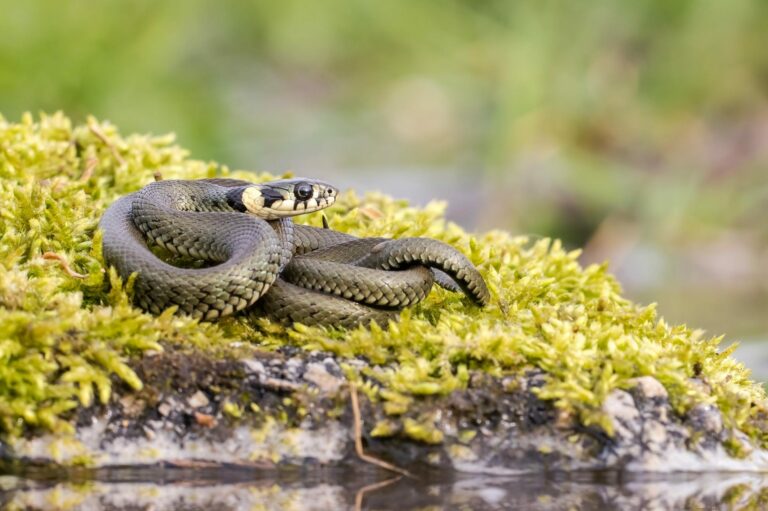Natrix natrix

Natrix natrix can reach a length of up to 1.5 meters. Its upper side is gray in color with dark markings, while the underside is light with dark spots as well. The grass snake is capable of swimming and often inhabits areas near water bodies (Schaefer 2018). It is considered the largest water snake in Europe (Glandt 2016). This species becomes active from March, and the breeding season starts in April after the first shedding. The eggs are laid in leaf piles or similar locations. Various bird species and mammals such as foxes, badgers, and raccoons are natural predators of the grass snake. Young grass snakes are also preyed upon by small mammals like shrews. The main threats to this species include habitat loss, intensification of agriculture, and road mortality (Glandt 2018).
Diet: The grass snake primarily feeds on amphibians such as frogs and toads, as well as fish. Young snakes mainly consume small amphibians and their larvae (Glandt 2018).
Conservation status: The grass snake is listed as “least concern” in the IUCN Red List of Threatened Species. In Germany, the genus Natrix is classified as “vulnerable,” but the specific status of this species is not further classified.
-
Glandt, D (2016)Amphibien und Reptilien. Berlin, Heidelberg: Springer Berlin Heidelberg.
-
Glandt, D (2018)Praxisleitfaden Amphibien- und Reptilienschutz. Schnell – präzise – hilfreich. Berlin, Heidelberg: Springer Berlin Heidelberg.
-
Schaefer, M (2018)Brohmer – Fauna von Deutschland. Ein Bestimmungsbuch unserer heimischen Tierwelt: Quelle & Meyer Verlag GmbH & Co